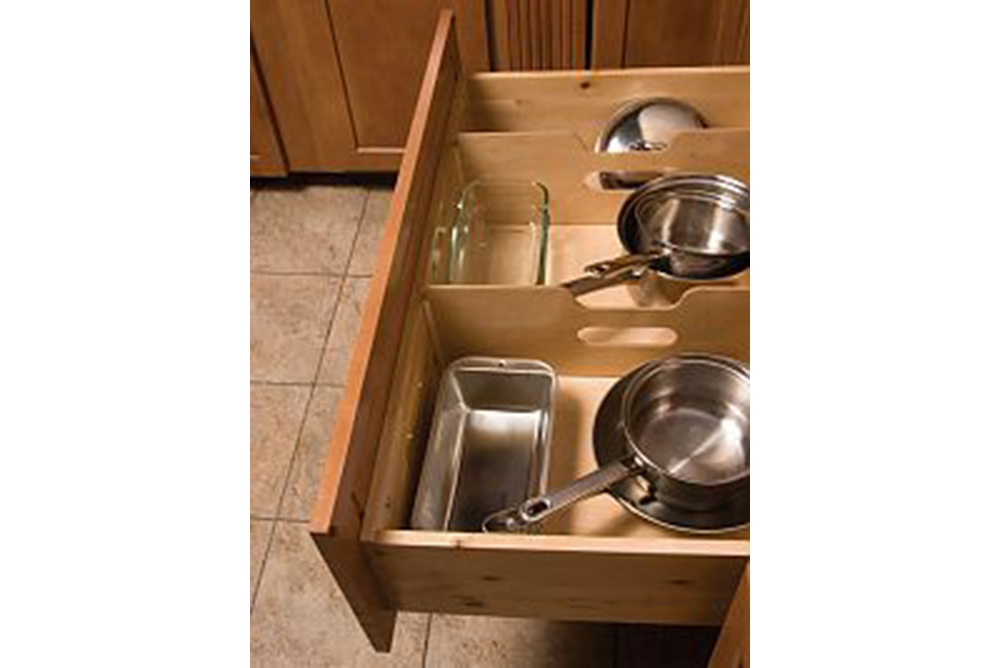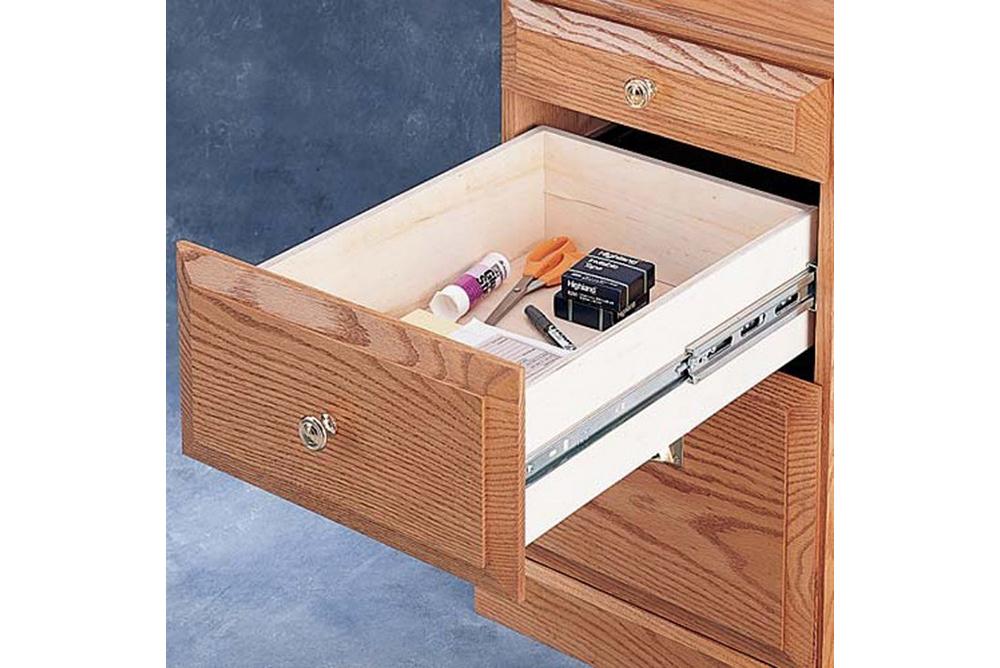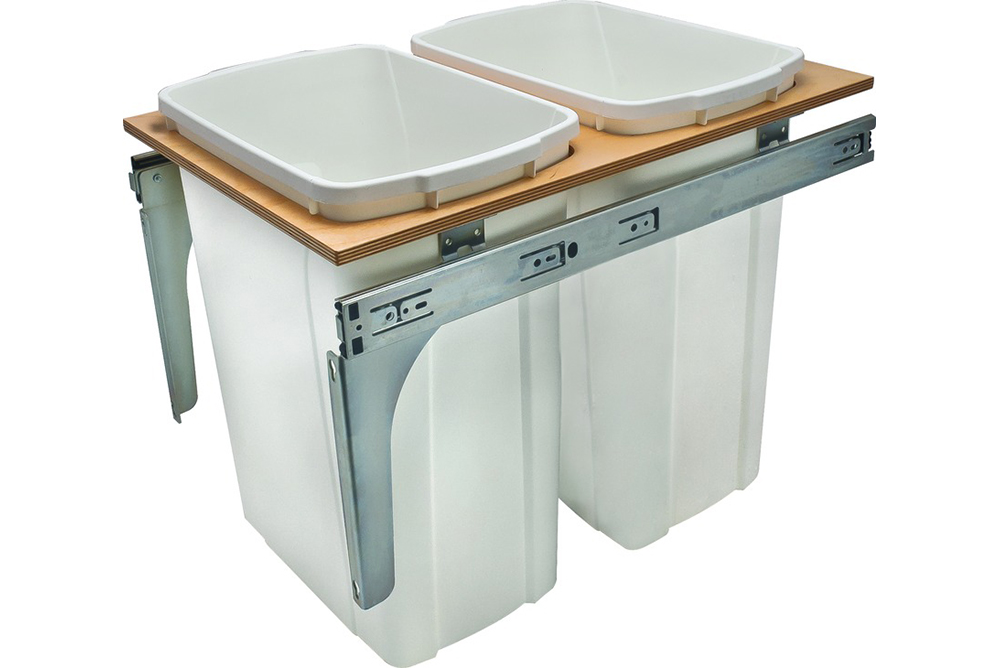I’m sorry! This was going to be a 3-point, 50-word piece, but I wound up with tons to say. If you can’t stand it, just read the boldface headers.
By Nancy McKeon
I’VE BEEN LOOKING AT online listings for condos lately and frequently come across the sentence “Kitchen needs work.” And sometimes I will look at the photo of said kitchen and think, “Oh hell, I could live with that.”
I think I may be done with kitchen re-dos. Finished. True, I say this now, not facing a full run of Formica countertop—not that there’s anything wrong with that!—or an unfortunate excess of busy granite. Oh dear, did I just write “granite”? Next thing you know, I’ll be typing s-t-a-i-n-l-e-s-s-s-t-e-e-l. But my appetite for construction projects may be overshadowed by my dismay at the idea of ripping out perfectly good five-year-old cabinets and ranges and counters just to replace them with newer versions of the same.
So where I once saw “potential!” I now just as often see “good enough.” Believe me, I’ve made more than my share of mistakes in kitchen remodels. Nonetheless, I have developed simple guidelines, things to be considered even if ultimately rejected.
I’m betting that MLB’s “grown-up girls” have developed their own “rules”; so read through mine and chime in with your own. Maybe they’ll keep me and others from making a mistake someday.
SAME STYLE, DIFFERENT PRICE: You’ll realize this if you look around a bit, but the same style of cabinet can in most cases be found at high and low price points. Even if you fall in love with those sleek, pricey European cabinets, you can get a similar look for less.
ARCHITECT V. KITCHEN DESIGNER: Architects bring added value to your project with their ability to “rationalize” and balance your space. On the other hand, many of them don’t seem to have a working knowledge of real kitchen life—you know, baking, making the kids’ school lunches, cooking while friends are crowding into the room, why you need a real pantry.
A kitchen designer will probably have a better sense of what’s needed, but the ones who make their money from the cost of the cabinets may stuff every inch of your room full of cabinetry, including that mortal sin of kitchen commonsense, the “attractive wine storage rack” built in next to the range or over the refrigerator. So for the architect you may have to ask for more, and for the kitchen planner, perhaps a bit less.
POT DRAWERS, PLEASE! You know all those base cabinets? The big question is, Why? They have a half shelf at most, and the rest of the space just swallows up your stuff, never to be seen again, even when you bend yourself like a pretzel to look around in there.
The answer to Why? is, of course, cost—much less expensive to build a box than to outfit one with deep drawers where you can store pots, or stacks of dishes, or small appliances. Pull out the drawer and you can see what you have without stooping.
(If there’s nothing wrong with your cabinets to justify starting from scratch, you can retrofit by installing those pull-out shelves you often see advertised. You’ll lose some space around the perimeter of the shelf [because the shelves need room to roll out beyond the doors], but you’ll gain by being able to find and reach things. If you are starting from scratch, though, I see no advantage to having to open a door and then grab for a rolling shelf; simpler to just pull out a drawer.) But this brings us to . . .
. . . FULL-EXTENSION DRAWER SLIDES: Don’t make the mistake I made with my bathroom vanity, where I got the drawers I asked for but can open them only about two-thirds of the way. What’s in the rear third of those drawers remains shrouded in mystery.
With full-extension drawers, you pull the drawer out and see the entire contents directly below you. Genius! For this privilege you may have to pay a per-cabinet upgrade, but I have found it to be worth it. My kitchen is all deep, wide drawers, each pair topped with a shallow drawer (as in the above illustration), also full-extension, for utensils and such. The only exceptions are the sink base cabinet and the garbage bin, about which . . .
BUILT-IN GARBAGE BIN: When

Hafele Twin Side-Mount Built-in Waste Bins, available through kitchensource.com.
people ask me which part of my kitchen is my favorite, I pull out the cabinet to the right of the sink. This is something I do probably 18, 20 times a day, and it’s satisfying every time.
In part it’s because the “cabinet” is simply a door to which is attached a heavy-duty frame and slide contraption that holds two trash bins. I use the front one for garbage and the rear one for recycling.
The other cause of such deep satisfaction is the quality of the apparatus, which is by the German hardware and fittings manufacturer Häfele (pronounced HEF-fuh-luh). This is high-grade, heavy-duty stuff; it’s been sliding in and out for more than 10 years now with not a wobble or a squeak unlike some of those lesser units. Yes, the more widely available models from other manufacturers run about $50 while the Häfele item shown above can cost $200, depending on width (and Häfele has less-expensive models). But Mercedes-Benzes cost more too, and they require costly maintenance whereas this guy just keeps on keeping on.
The Häfele wholesale site may be too “parts” oriented and too intimidating for us consumers. Better to go to the retail site KitchenSource.com. In fact, it’s fun to go to that site and add up all the cool kitchen bells and whistles you could have. Yes, reality has to set in at some point, but better to know the options than regret later that you didn’t know a really useful thing was available.
The reason I keep going on about trash is that time after time I look at a picture of a newly redone kitchen only to notice a garbage can sitting in some corner of the room. True, oftentimes people can’t sacrifice the storage space that would otherwise be taken up by trash; but sometimes it’s just a lack of forethought. Consider yourselves on notice.

A base cabinet made with 3/4-inch plywood by Barker Cabinets. The interior tray dividers are good if you have a lot of baking sheets or, well, I guess trays.
3/4-INCH PLYWOOD CONSTRUCTION: It’s a pretty basic requirement for good cabinets because 3/4-inch plywood is sturdier and more stable than lighter-grade plywood and certainly than particleboard, which can wick up moisture from all those kitchen spills. ‘Nuff said.
BTUs, BABY: Until we all became obsessed with restaurant-style gas ranges, American stoves were a pretty anemic lot. But you don’t have to moon over the $8,000 trophy range you can’t afford (or can’t justify, given your microwave habit). You will surely have your own requirements (self-clean? middle griddle? gas-electric combo?), but for the burners it all comes down to the BTUs. Online browsing makes it easier than ever to flip through the specs on various manufacturers’ ranges; you’ll soon find one you can afford that can give you the power burners (and maybe even the low-BTU simmer burner) you want.
BUILT-TO-ORDER CABINETS VERSUS TRULY CUSTOM MADE: Just a thought about this. Major kitchen cabinet manufacturers will of course lay out the cabinets to fit your kitchen space, but to keep prices down they make only certain widths. Asking for a custom size for a weird hole in the layout would cost more. I had kitchen cabinets custom-made by Robert Greene of Amazing Grain Woodworking in Rockville, Maryland. The bid was within pennies of what a standard manufacturer would have charged once we tweaked the sizes and options. So don’t dismiss custom out of hand; you never know.
There’s much more to outfitting a kitchen, but I fear I’ve worn out my welcome. It’s your turn to fill in the things I haven’t thought to list.

I love your perspective on kitchens! Embracing “good enough” over perfect is so refreshing. Your guidelines are insightful, especially the emphasis on functionality with pot drawers and full-extension slides. It’s all about creating a space that truly works for everyday life. Thanks for sharing your wisdom and experience!
Thanks for some terrific tips!
Thank you. Some terrific tips!